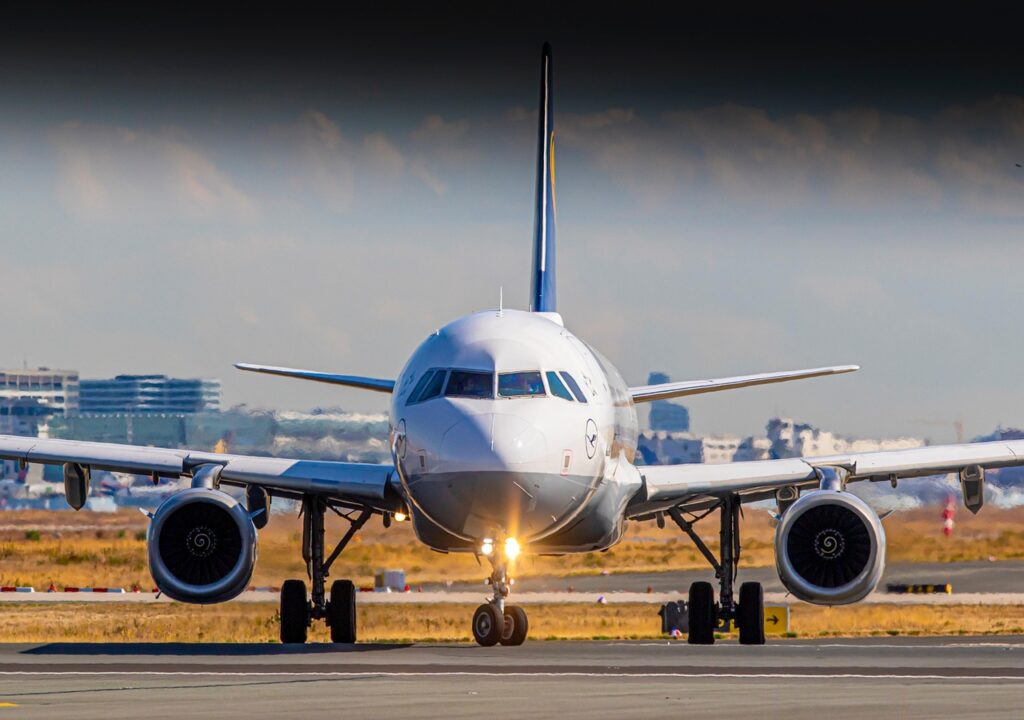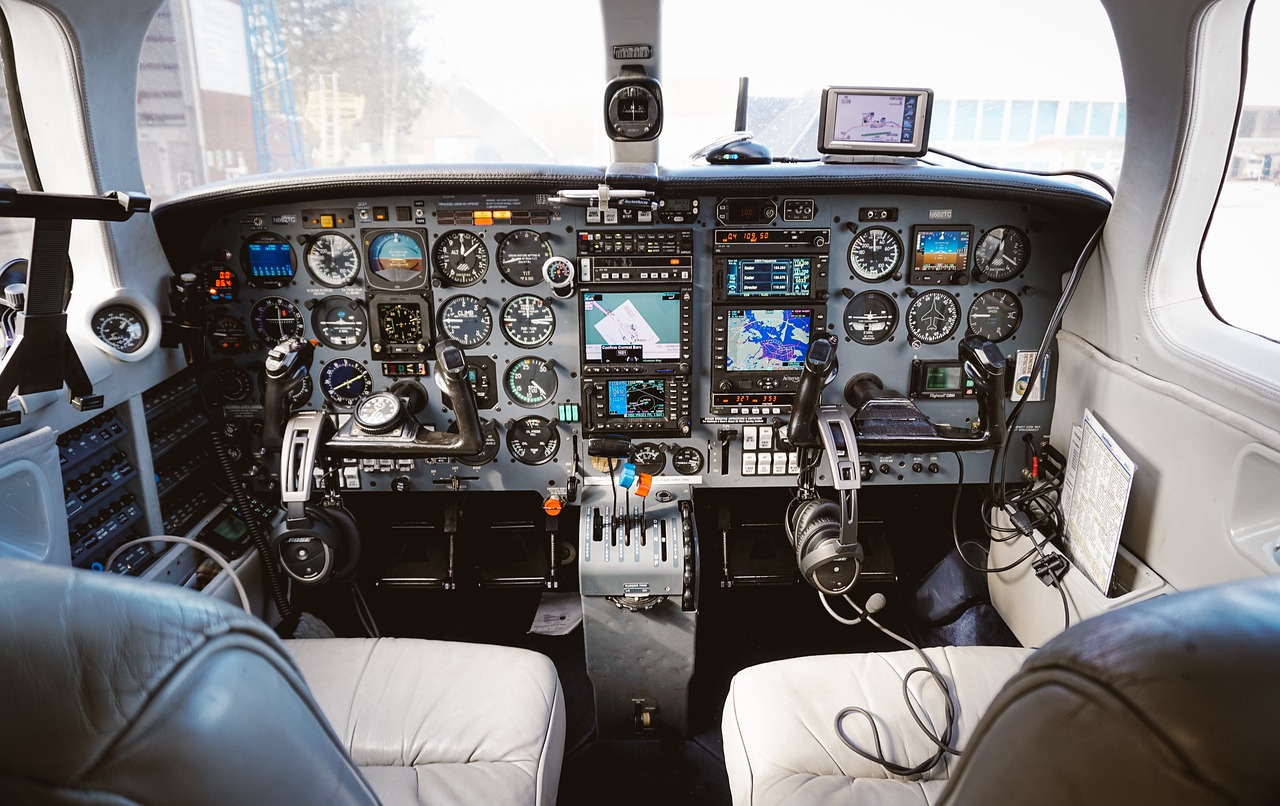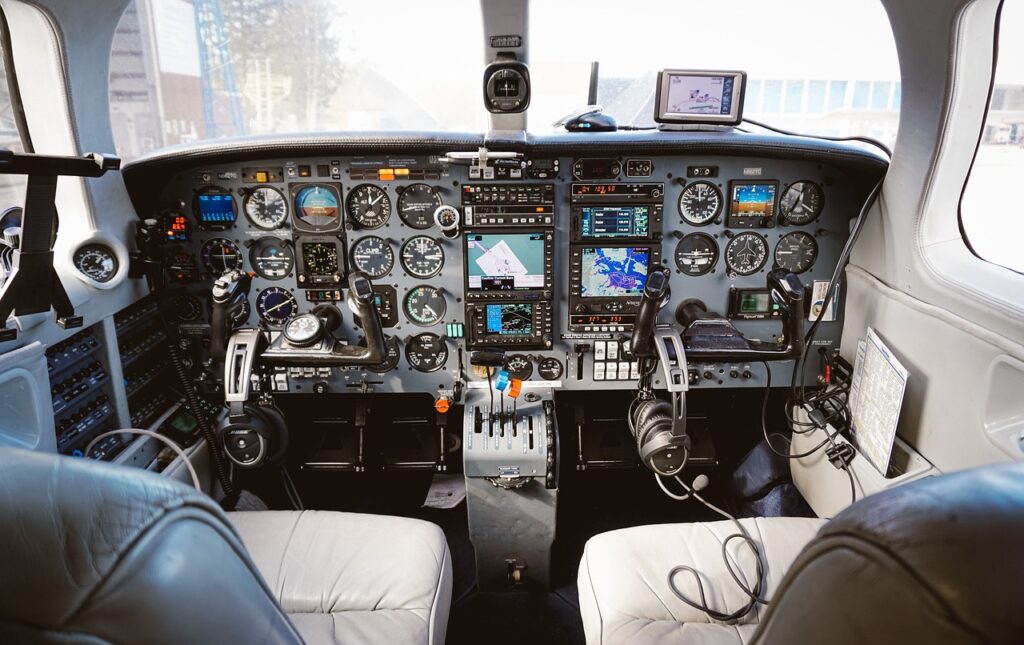Introduction
In an industry as dynamic and regulated as the aviation industry, effective training management is crucial for ensuring safety, compliance, and operational efficiency. Using an Aviation Training Management System (ATMS) can help navigate these rules and requirements. An Aviation Training Management System (ATMS) is a comprehensive solution designed to streamline the planning, execution, and monitoring of training programs for pilots, cabin crew, maintenance personnel, and other aviation professionals.
Your ATMS can be fully customised to pick-up the features you need: Learning Management System, Planning and Scheduling, Qualification and Document management, Analytics and many more.
With this article, we will delve into the core components, benefits, and key features of an Aviation Training Management System, highlighting its significance in modern aviation training.
What is an Aviation Training Management System?
An Aviation Training Management System (ATMS) is a comprehensive, integrated software platform designed to streamline and optimize the administration of training activities within aviation organizations, including airlines, flight schools, training centers, and regulatory bodies. It encompasses various specialized modules that facilitate curriculum development, training scheduling, resource allocation, instructor and trainee management, regulatory compliance tracking, record-keeping, and performance assessment. By centralizing these functions into a single digital ecosystem, an Aviation Training Management System enhances operational efficiency, reduces administrative workload, and ensures compliance with industry regulations such as ICAO, EASA, and FAA standards.
👉 Learn more about industry regulations ✈️

This type of Training Management System (TMS) is not exclusive to aviation; it is widely used in industries that require rigorous training programs, competency-based assessments, and continuous improvement. Sectors such as healthcare, the nuclear industry, defense, and emergency response services also benefit from digital training solutions that enhance skill development, automate compliance monitoring, and improve training outcomes. In the aviation industry, where safety and precision are paramount, an advanced Training Management System plays a crucial role in ensuring that pilots, cabin crew, maintenance personnel, and ground staff receive structured, competency-driven training that aligns with both regulatory requirements and operational needs.
By leveraging an Aviation Training Management System, organizations can gain real-time insights into trainee progression, streamline audit processes, and implement data-driven training enhancements. Whether for type rating, recurrent training, instructor qualification, or regulatory compliance, an ATMS provides scalability, flexibility, and automation to meet the evolving demands of modern aviation training.
What are the Core Components of an ATMS
An Aviation Training Management System (ATMS) is designed to streamline and enhance training operations for airlines, flight schools, and aviation training organizations. It typically consists of multiple core components, each playing a vital role in managing training processes efficiently. Below, we explore some of the key features and their benefits.
Electronic Training Records (ETR)
An Electronic Training Records (ETR) system is a foundational feature of any Training Management System (TMS). It enables seamless tracking of pilot, crew, and maintenance personnel training data, providing a digital alternative to traditional paper-based records. While ETR is often integrated within an ATMS, it can also function as a standalone system, serving as a first step toward implementing Evidence-Based Training (EBT).
👉 Learn more about the Electronic Training Records!
Learning Management System (LMS)
A Learning Management System (LMS) is a critical component of a Training Management System, allowing organizations to create, manage, and deliver training content. With an LMS, trainees can:
- Access self-paced e-learning modules from anywhere, anytime.
- Engage with interactive quizzes, videos, and study materials.
- Track learning progress and certification status.
Additionally, an LMS helps organizations centralize training documentation, ensuring compliance with aviation industry regulations.
Instructor App
An Instructor App enhances training efficiency by providing instructors with powerful tools for real-time grading, feedback, and assessment. Key features include:
- Automated report generation to streamline evaluation.
- Seamless integration with training records for accurate tracking.
- Enhanced collaboration tools to improve instructor-learner engagement.
By digitizing the evaluation process, the Instructor App ensures consistency in training assessments while reducing administrative workload.
Qualification Management System
A Qualification Management System helps aviation training providers monitor trainee certifications, qualifications, and expiry dates. With automated updates, instructors and administrators can:
- Ensure compliance with aviation regulatory bodies (e.g., EASA, FAA, ICAO).
- Receive real-time notifications when a qualification is due for renewal.
- Minimize the risk of outdated or expired certifications affecting operations.
This system plays a crucial role in maintaining training continuity and regulatory compliance.
Scheduling and Resource Management
Effective training scheduling and resource allocation are key to an efficient ATMS. A Scheduling & Resource Management module allows aviation organizations to:
- Automate training session scheduling based on instructor and trainee availability.
- Optimize simulator and classroom bookings to prevent resource conflicts.
- Utilize forecasting tools to anticipate future training needs.
By leveraging smart scheduling, organizations can maximize efficiency and reduce downtime.
Reporting and Analytics
A comprehensive reporting and analytics module enables aviation training providers to extract valuable insights from training data. This feature allows organizations to:
- Generate detailed reports on trainee performance and progression.
- Export and archive training records for auditing and compliance.
- Visualize key training metrics in custom dashboards for data-driven decision-making.
With advanced analytics, aviation training managers can refine training strategies, identify trends, and continuously improve training programs.
👉 Check out every modules of our Aviation Training Management System!
What are the Benefits of Implementing an ATMS?
Implementing an Aviation Training Management System (ATMS) offers significant advantages for airlines, ATOs, and training organizations.
- Enhanced Compliance: Ensuring regulatory compliance is crucial in aviation. An ATMS systematically tracks certifications and training requirements, automatically updating trainee qualifications. With a Qualification Management System, administrators receive alerts for upcoming expirations, reducing the risk of non-compliance and ensuring smooth audits.
- Operational Efficiency: By automating administrative tasks such as scheduling, record-keeping, and reporting, an ATMS reduces manual workload and minimizes errors. This leads to smoother training operations, allowing instructors and administrators to focus on improving training outcomes rather than managing paperwork.
- Cost Reduction: Optimizing resource allocation helps cut unnecessary training expenses. An ATMS ensures better scheduling of instructors, trainees, and simulators, leading to improved utilization and cost savings across training programs.
- Improved Training Quality: A structured framework for curriculum development and delivery enhances training consistency. With a centralized system, organizations can ensure all trainees receive standardized, high-quality instruction that meets regulatory and operational requirements.
Key Features to Look for in an ATMS
How can you know if an aviation training software is valid and worth implementing in your organization? A few key features are mandatory for a great ATMS so here’s what you should look for:
- Customization: The ability to tailor the system to specific organizational needs and training requirements. The more a feature can be completely adapted and designed for your needs, the better.
- Integration Capabilities: Seamless integration with existing systems such as HR, scheduling, and compliance databases. If the training software can be connected to your software environment (via API for example), then you found the one you need. Integrating and connecting the ATMS to your existing tool is essential to collect and analyse data.
- User-Friendly Interface: An intuitive design that facilitates ease of use for administrators, instructors, and trainees. How can you gain time and efficiency if you’re having a hard time using your training software? An user-friendly interface is on of the most important part for your training management system.
- Scalability: Your Aviation Training Management System needs the capacity to accommodate organizational growth and evolving training demands. You need to be able to keep it as long as possible, and make sure it can evolve as fast as your organisation is growing.

Who are the Leading ATMS Providers
Selecting the right Aviation Training Management System (ATMS) plays a key role in helping airlines, training centers, and aviation organizations streamline training operations, ensure compliance, and enhance pilot, cabin crew, and maintenance training programs. Several leading providers offer robust, feature-rich solutions designed to meet the evolving needs of the aviation industry.
- CAE: A global leader in aviation training, CAE not only provides high-fidelity simulators but also offers a powerful Training Management and Deployment System (TMDS). This system includes an LMS, electronic training records, scheduling tools, and qualification management, ensuring streamlined training operations.
- Hinfact: For those seeking a cutting-edge, AI-powered ATMS, Hinfact Training is a top contender. Its automated workflows, data-driven insights, and seamless integration with operational and safety data make it a leading choice for adaptive and competency-based training. By leveraging AI, Hinfact ensures that training is efficient, personalized, and compliant with regulatory requirements.
- MINT TMS: Mint Software Systems specializes in a cloud-based ATMS that offers curriculum management, electronic grading, scheduling optimization, and advanced reporting. This platform is widely adopted by major airlines and training providers for its reliability and scalability.
- Flyco: Designed specifically for the aviation sector, Flyco’s Training Management System integrates qualification management, e-learning, a document library, and resource management into one platform, ensuring seamless training oversight.
When selecting an ATMS, organizations should consider factors like automation, compliance, integration, and scalability to ensure efficient training operations.
Implementing an ATMS: Best Practices
Implementing an Aviation Training Management System (ATMS) is a crucial step toward streamlining pilot, crew, and maintenance staff training. To ensure a smooth transition and maximize efficiency, follow these best practices:
Conduct a Needs Assessment
Before selecting an ATMS, analyze your organization’s training requirements. Identify key features such as automated scheduling, competency tracking, compliance management, and reporting tools to ensure the system aligns with your objectives.
Involve Key Stakeholders
Engage essential stakeholders—training managers, instructors, IT teams, and compliance officers—from the start. Their insights will help select the right system and ensure seamless integration with existing processes.
Provide Comprehensive Training & Support
User adoption is key to success. Offer hands-on training for instructors and trainees to enhance proficiency. Choose an ATMS provider that offers ongoing support, system updates, and troubleshooting assistance.
Ensure Compliance & Integration
Your ATMS should comply with aviation regulations (e.g., EASA, FAA) and integrate smoothly with other operational tools such as LMS, crew scheduling, and reporting systems to maintain efficiency.
Regularly Evaluate & Optimize
Monitor system performance through user feedback and data analytics. Regular updates and refinements will help keep your ATMS aligned with evolving aviation training needs.
By following these best practices, your organization can leverage an ATMS to enhance training efficiency, reduce administrative workload, and improve regulatory compliance.
Conclusion
Implementing an Aviation Training Management System (ATMS) is a game-changer for airlines, training organizations, and aviation professionals striving to optimize training efficiency. By centralizing training data, automating compliance tracking, and offering real-time insights into trainee performance, an ATMS ensures that organizations remain compliant with evolving aviation regulations while enhancing the quality of training programs.
Moreover, the ability to digitize and standardize training workflows not only reduces administrative burdens but also minimizes operational costs. With advanced analytics and reporting features, aviation companies can make data-driven decisions to continuously improve training methodologies and instructor effectiveness. This leads to higher competency levels among trainees and, ultimately, improved safety standards across the industry.
As aviation continues to evolve, leveraging technology-driven solutions like an ATMS will be critical for staying ahead in a competitive landscape. Whether it’s managing recurrent training, tracking instructor performance, or ensuring seamless regulatory compliance, an ATMS empowers aviation organizations to operate more efficiently and effectively.
Investing in the right Aviation Training Management System is not just about compliance—it’s about future-proofing your training operations, improving trainee engagement, and driving operational excellence. The time to modernize aviation training is now.
👉 Looking for the best ATMS for your organization? Discover how our solution can help!











